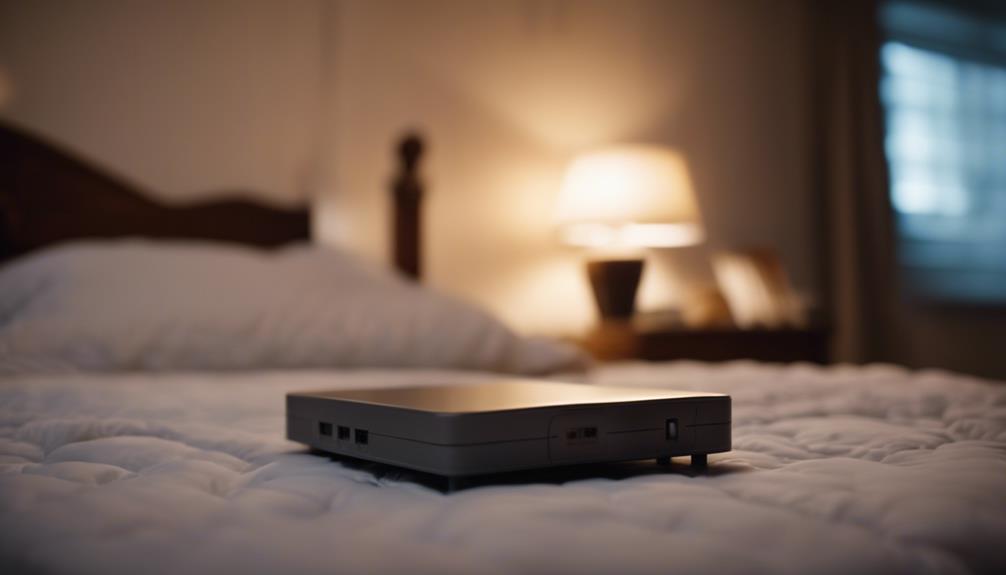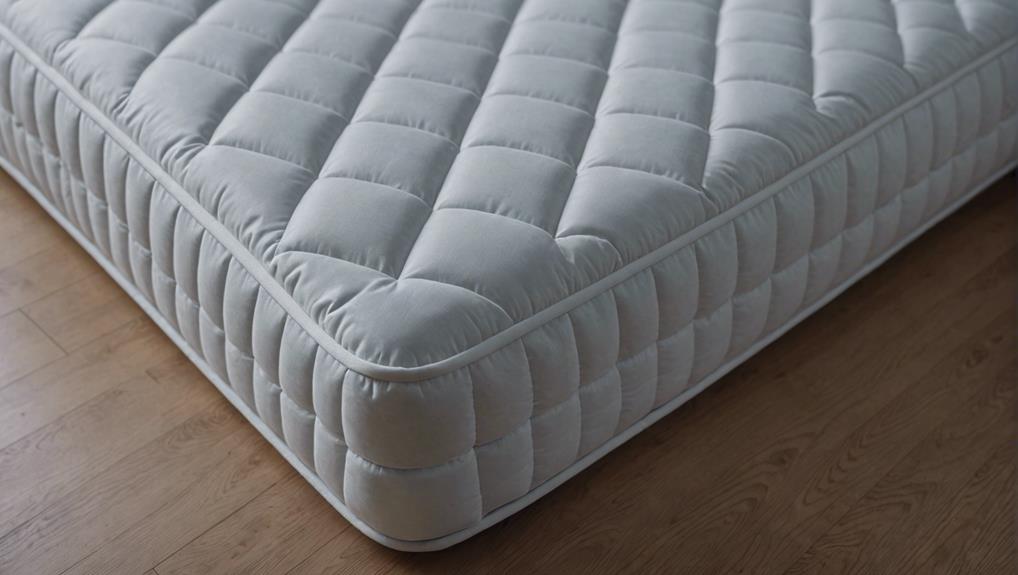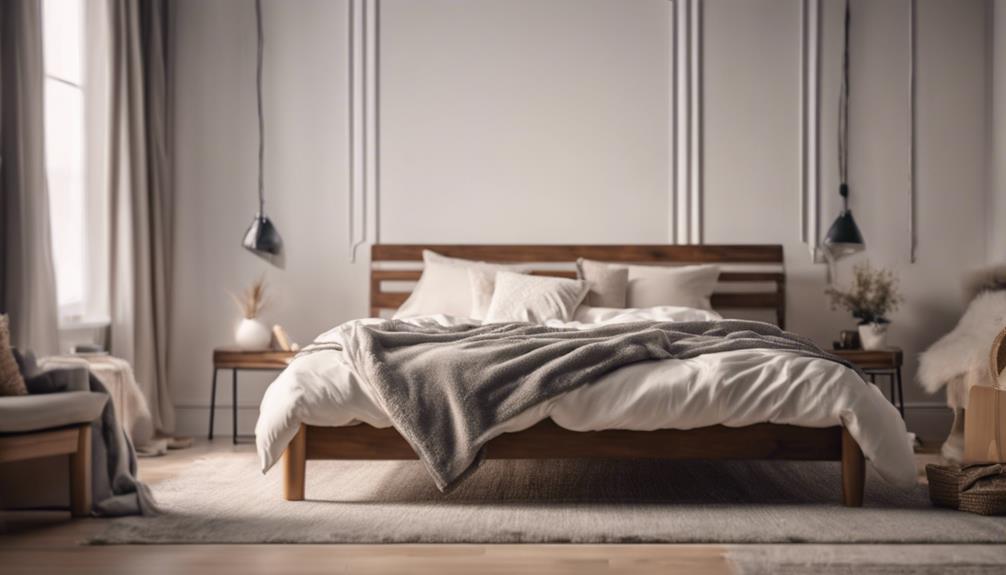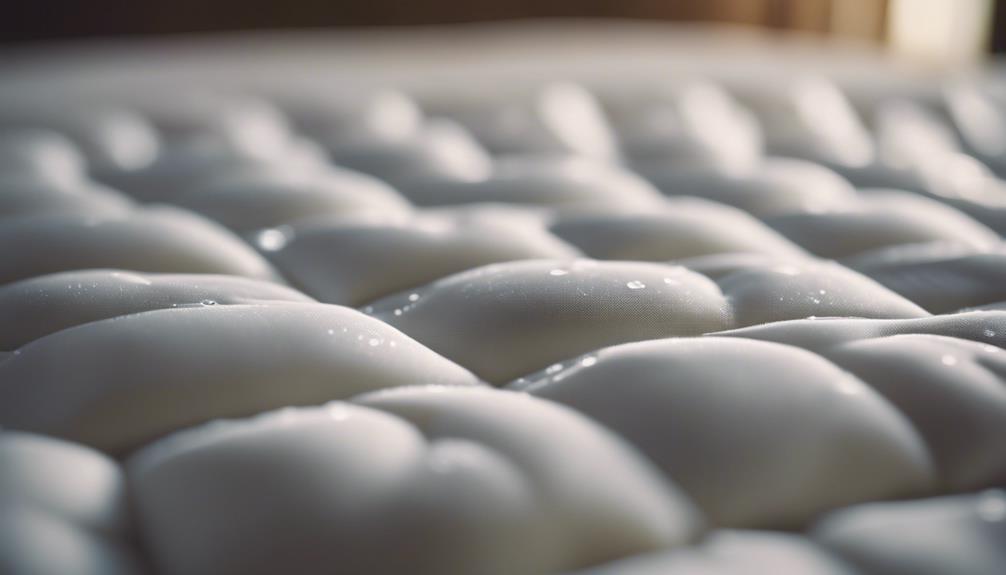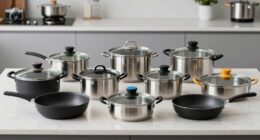Heated mattress pads use a moderate amount of electricity, typically ranging from 60 to 90 watts. They are energy-efficient options for staying warm while minimizing power consumption. Dual controls allow personalized temperature settings, and automatic shutoff features help save energy. Proper usage guidelines maximize efficiency, while avoiding cord folding prevents energy loss. Lower heat settings reduce electricity usage, making them more efficient than electric blankets. Factors like pad size and maintenance impact energy consumption. To reduce electricity usage further, consider using timers for automatic shut-off and insulating the sleeping area. Heated mattress pads are a practical and cost-effective choice for warmth.
Key Takeaways
- Heated mattress pads consume 60-90 watts, efficient compared to other options.
- Lower heat settings reduce electricity usage for cost-effectiveness.
- Dual controls allow personalized comfort without excessive energy consumption.
- Automatic shut-off features enhance safety and save electricity.
- Proper care and usage guidelines optimize energy efficiency.
Energy Efficiency of Heated Mattress Pads
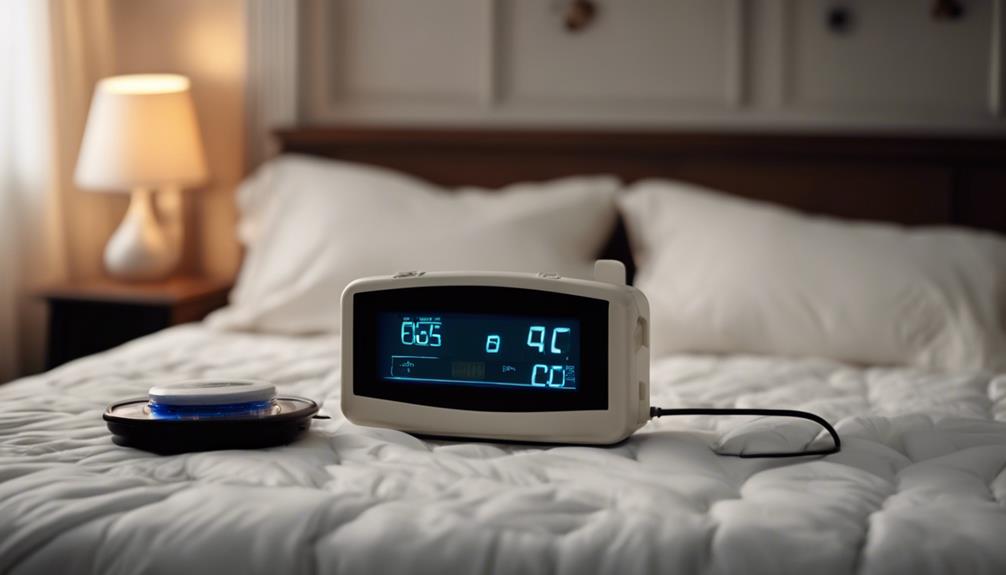
How can heated mattress pads contribute to energy efficiency in our homes?
Energy-efficient heated mattress pads equipped with low-voltage technology play a significant role in reducing electricity usage. By utilizing dual controls, these pads offer personalized temperature settings, allowing users to optimize their comfort without wasting energy. Additionally, automatic shutoff features help conserve electricity by turning the pad off when not in use.
To maximize energy efficiency, it's essential to follow proper usage guidelines, such as avoiding folding or trapping cords which can lead to energy loss. By incorporating these features and practicing proper usage, heated mattress pads can be a practical and energy-saving addition to our homes.
Understanding Electricity Usage of Heated Mattress Pads
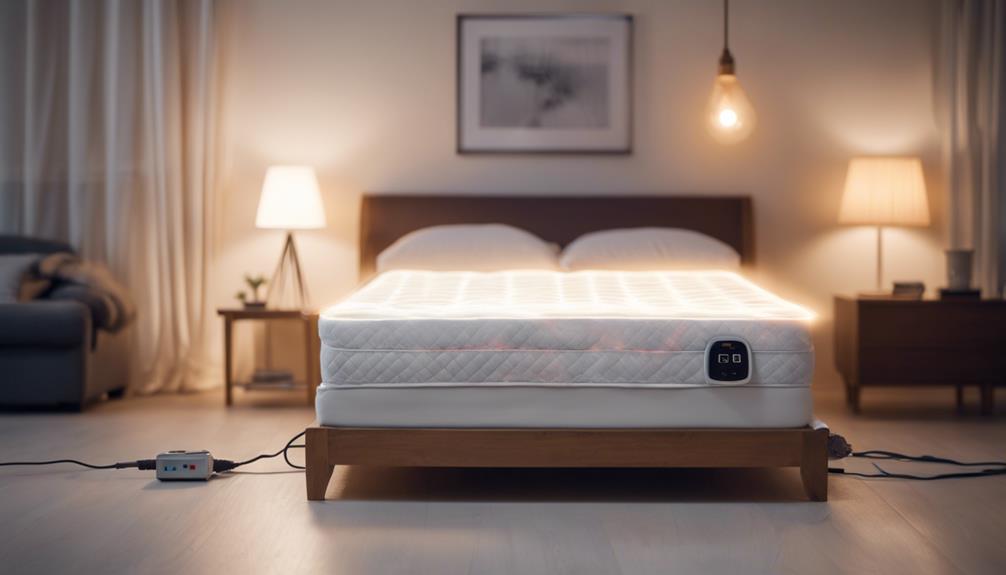
We can gain insight into the electricity usage of heated mattress pads by understanding their wattage consumption and energy-saving features. Heated mattress pads typically consume between 60-90 watts of electricity, making them more energy-efficient than electric blankets. By adjusting the pad to lower heat settings, it is possible to reduce electricity consumption while still enjoying the warmth provided. Additionally, most heated mattress pads come equipped with an automatic shut-off feature, ensuring safety and preventing unnecessary energy usage. To optimize electricity usage further, it is recommended to follow the safety instructions provided by the manufacturer. Below is a table summarizing key points related to the electricity usage of heated mattress pads:
| Feature | Details |
|---|---|
| Electricity Consumption | 60-90 watts |
| Energy Efficiency | More efficient than electric blankets |
| Lower Heat Settings | Reduces electricity consumption |
| Automatic Shut-Off | Enhances safety and saves energy |
| Safety Instructions | Important to follow for best energy usage |
Factors Affecting Energy Consumption
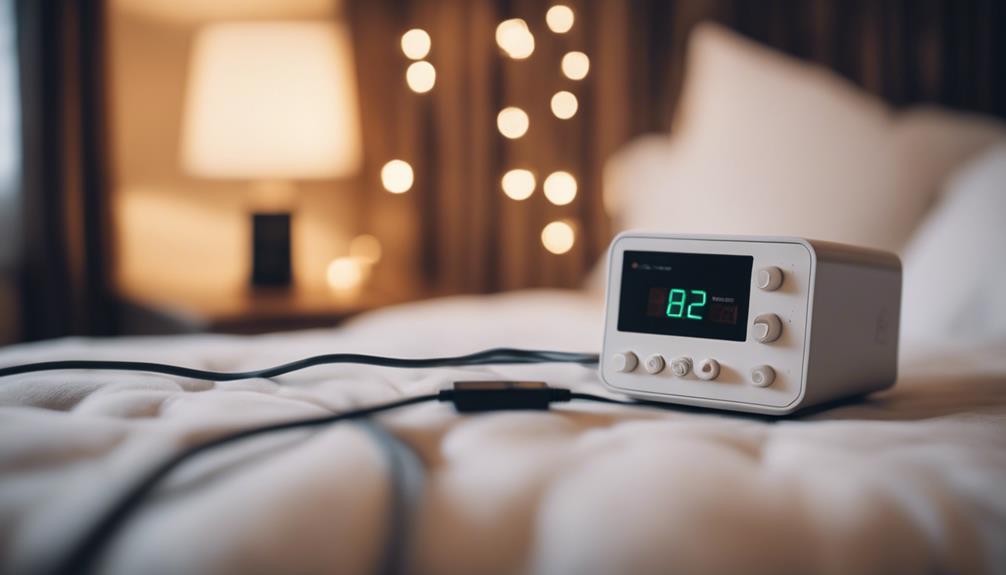
Factors affecting energy consumption in heated mattress pads vary based on usage patterns and design features. The electricity usage of heated mattress pads typically ranges between 60-90 watts, with variations depending on the size of the pad and the heat settings selected. Opting for lower heat settings can effectively reduce energy consumption.
Dual control features in some mattress pads enable personalized temperature control for each side of the bed, impacting overall energy usage. Additionally, essential maintenance and care play a significant role in optimizing the energy efficiency of heated mattress pads. Regular upkeep, such as keeping the pad clean and ensuring it's in good working condition, can help maintain its energy-saving capabilities.
Tips to Minimize Electricity Usage
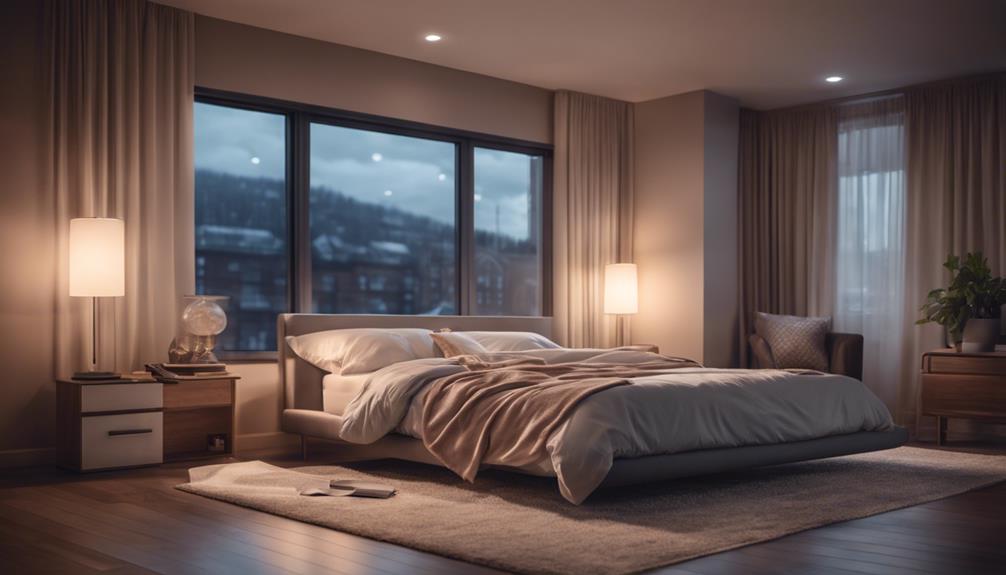
To enhance efficiency, consider implementing energy-saving practices when using heated mattress pads. Lowering the heat setting on the mattress pad can greatly reduce electricity usage while still providing warmth during sleep.
Using a timer to automatically turn off the pad after a set duration is another effective way to minimize electricity consumption. Opting for a mattress pad with energy-saving features like auto shut-off or low-voltage technology can further contribute to reducing energy usage.
Additionally, insulating your sleeping area with extra blankets or sleeping bags can help retain heat, allowing you to lower the temperature on the mattress pad and decrease its running time. By taking these steps to reduce electricity consumption, you can enjoy the comfort of a heated mattress pad while being mindful of energy usage and costs.
These simple adjustments not only benefit your wallet but also promote environmentally friendly practices in your daily routine.
Comparing Heated Mattress Pads to Other Heating Options
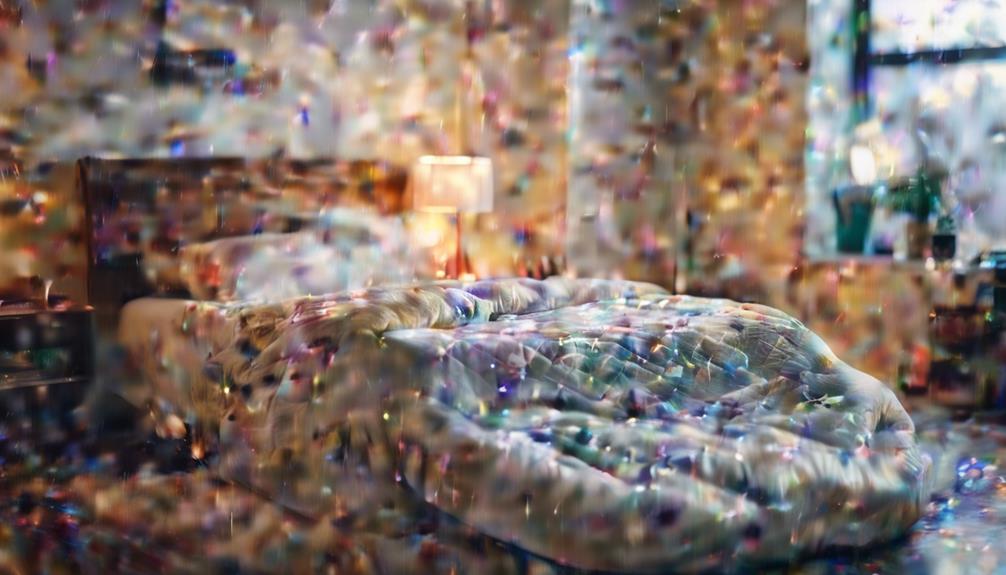
Comparing heated mattress pads to other heating options reveals their superior energy efficiency and cost-effectiveness. Heated mattress pads typically consume 60-90 watts of electricity, lower than electric blankets.
Unlike space heaters or HVAC systems, heated mattress pads are more energy-efficient and economical. By providing targeted warmth, they help reduce overall heating costs in a bedroom. The low-voltage technology in heated mattress pads guarantees efficient energy usage without compromising on comfort.
In contrast to running central heating systems all night, heated mattress pads offer an economical and energy-saving choice. When looking to stay warm while minimizing electricity consumption, heated mattress pads stand out as a practical and efficient solution.
Cost-Effective Heating Solutions
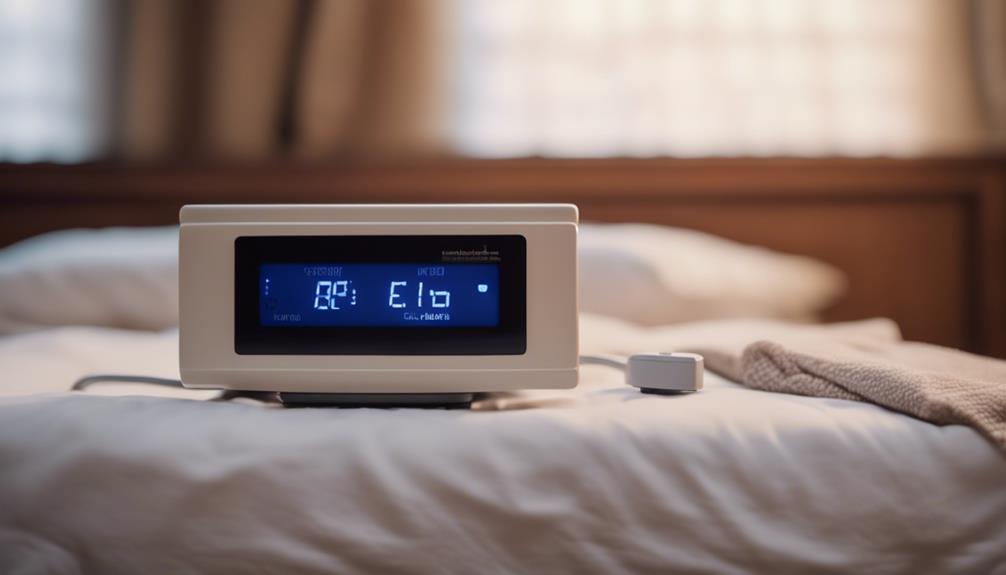
Heated mattress pads are known for being energy-efficient heating options that provide budget-friendly warmth solutions. With their low electricity consumption and effective heating capabilities, they offer a cost-effective way to stay cozy during colder seasons.
Compared to other heating alternatives, heated mattress pads are a practical choice for those looking to save on heating costs.
Energy-Efficient Heating Options
Using energy-efficient heating options is a practical and economical way to stay warm during colder months.
Heated mattress pads, with their low-voltage technology, are an energy-efficient solution that consumes between 60-90 watts of electricity. They offer personalized comfort and targeted warmth, making them a cost-effective choice compared to space heaters.
These pads can help reduce overall electricity consumption, especially when used to warm a bed rather than heating an entire room. With proper usage, heated mattress pads can provide the desired comfort without greatly impacting electricity costs.
Opting for energy-efficient heating options like heated mattress pads can be a smart way to stay warm while being mindful of electricity consumption and costs.
Budget-Friendly Warmth Solutions
When looking for affordable ways to stay warm, considering cost-effective heating solutions becomes essential. Heated mattress pads are an energy-efficient and cost-effective option for providing targeted warmth.
With typical electricity usage ranging from 60-90 watts, these pads offer localized heat directly to the sleeper, helping to lower energy bills by reducing overall consumption. Compared to traditional space heaters, heated mattress pads are a budget-friendly choice that can contribute to more efficient heating in a home.
Frequently Asked Questions
How Much Energy Does a Heated Mattress Pad Use?
Heated mattress pads typically use between 60-90 watts of electricity, similar to a small light bulb or laptop charger.
The low-voltage technology in these pads guarantees energy efficiency, offering a cost-effective way to stay warm on cold nights.
Proper usage, like turning them off when not in use, helps manage electricity consumption effectively.
Does a Heat Pad Use a Lot of Electricity?
Heated mattress pads do consume electricity, but they're more energy-efficient than electric blankets.
The wattage typically ranges from 60-90 watts, making them a moderate electricity consumer.
The low-voltage technology in these pads helps in reducing energy consumption.
Proper usage, like avoiding folding or bunching up the pad while plugged in, can optimize energy efficiency.
Can I Leave a Heated Mattress Pad on All Night?
We can safely leave a heated mattress pad on all night as long as it's used properly.
It's important to make sure the wires are flat and not bunched up to prevent any safety hazards.
The automatic shutoff feature adds an extra layer of security by turning off the pad after 12 hours of continuous use.
It's essential to follow the manufacturer's instructions for the safest and most efficient operation of the heated mattress pad.
Are Heated Mattress Toppers Expensive to Run?
Heated mattress pads are typically cost-effective to run. Their electricity usage falls within the range of 60-90 watts, translating to around 15-30 cents per night for an 8-hour use.
These pads are considered energy-efficient compared to other heating options. Opting for lower heat settings can further reduce electricity consumption.
The overall cost of running a heated mattress pad is generally affordable, offering significant comfort benefits for users.
Conclusion
To sum up, heated mattress pads can be energy-efficient heating options if used wisely. Remember the old adage, 'waste not, want not.'
By understanding the factors that affect electricity usage, implementing energy-saving tips, and comparing alternative heating solutions, you can minimize your electricity consumption and keep your energy bills in check.
Make informed decisions to stay warm and cozy without breaking the bank.
